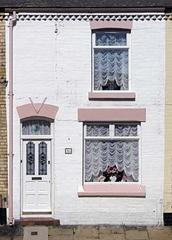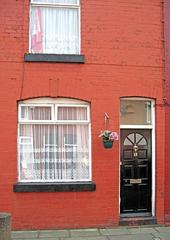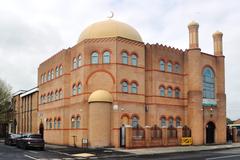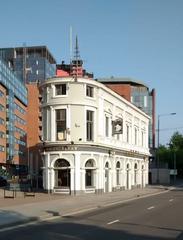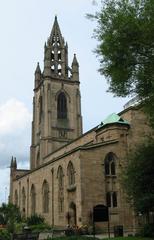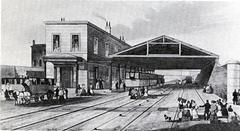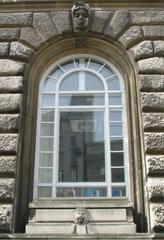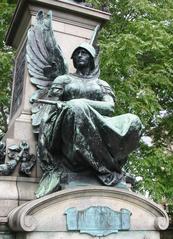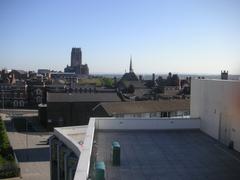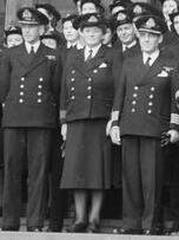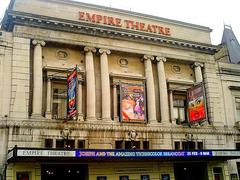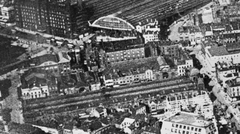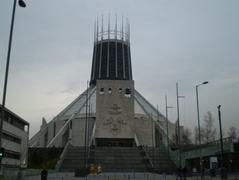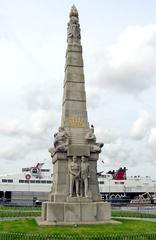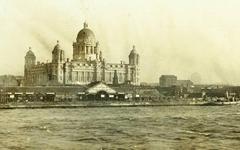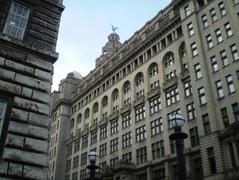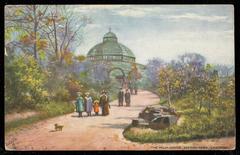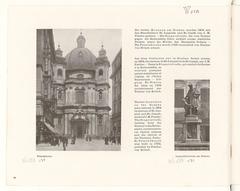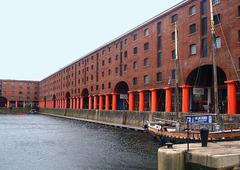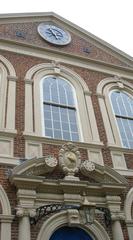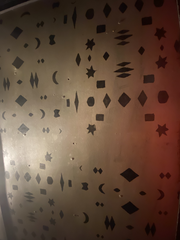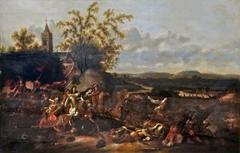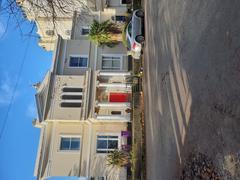Liverpool Castle: Visiting Hours, Tickets, and Historical Sites Guide
Date: 04/07/2025
Introduction
Liverpool Castle, though no longer standing in its original form, remains a powerful symbol of the city’s medieval heritage. Once a strategic stronghold and administrative center, the castle’s legacy is preserved through commemorative sites in Liverpool’s city center and an evocative early 20th-century replica in Lever Park, Rivington, Lancashire. This guide explores the castle’s rich history, architectural features, its role in shaping Liverpool, and provides all essential information for visitors—including visiting hours, ticketing details, accessibility, and nearby attractions. Whether you are a history enthusiast or a casual explorer, Liverpool Castle’s story offers a window into England’s medieval past and Liverpool’s transformation into a modern metropolis (Only in Liverpool; Historic Liverpool; Liverpool Echo).
Table of Contents
- Early History and Construction
- Architectural Features and Layout
- Role in Liverpool’s Development
- Decline, Civil War, and Demolition
- Legacy and Modern Commemorations
- The Replica at Rivington: History and Visitor Guide
- Frequently Asked Questions (FAQs)
- Conclusion
- References and Further Reading
Early History and Construction
Liverpool Castle was erected between 1232 and 1235 under the direction of William de Ferrers, 4th Earl of Derby, positioned on a plateau between what is now James Street and Castle Street—today marked by Derby Square (Only in Liverpool; Historic Liverpool). Its strategic location overlooking the River Mersey was chosen to defend the new port, facilitate trade, and secure England’s northwestern coast, especially for expeditions to Ireland.
The castle was fortified with a deep moat carved from solid rock, enhancing its defensive qualities. It stood as a formidable symbol of authority and a practical bastion for both military and administrative functions (The Guide Liverpool).
Architectural Features and Layout
Liverpool Castle was designed as a classic medieval fortress. Key features included:
- Five imposing towers (including a gatehouse, chapel, and prisoner tower)
- Curtain walls providing robust defense
- Moat approximately 18 meters wide
- Internal structures such as a great hall, brewhouse, bakehouse, covered well, and storage rooms
The castle’s design supported both defense and governance, with dedicated spaces for judicial proceedings and daily administration (History of Liverpool).
Role in Liverpool’s Development
The castle was integral to Liverpool’s emergence as a vital trading port, protecting the harbor and town from incursions and fostering economic growth (Only in Liverpool). It hosted important visitors, such as King Edward II in 1323, and was home to influential families like the Molyneuxs, who shaped the city’s fortunes.
Beyond military defense, the castle functioned as a seat of local governance and justice, playing a foundational role in Liverpool’s administration.
Decline, Civil War, and Demolition
By the 16th century, Liverpool Castle had fallen into disrepair. A 1559 report described it as “utter rwyne [ruin] and decay” (Historic Liverpool). It suffered further damage and neglect during the English Civil War, changing hands between Royalist and Parliamentarian forces (Only in Liverpool).
In 1715, Liverpool Corporation ordered its demolition; by 1726, the last remnants were cleared to make way for St George’s Church. Today, a bronze plaque on the Victoria Monument in Derby Square marks the site (TravelTriangle).
Legacy and Modern Commemorations
Though the original castle has vanished, its legacy is preserved in Liverpool’s urban landscape—most notably in street names and the commemorative plaque at Derby Square. Artifacts and historical records are displayed at the Museum of Liverpool Life at Albert Dock (Only in Liverpool), and detailed reconstructions, such as those by E.W. Cox, help visualize its past (Historic Liverpool).
The Replica at Rivington: History and Visitor Guide
Location and Setting
The Liverpool Castle replica stands in Lever Park, Rivington, near Chorley, Lancashire—about a 60-minute drive from Liverpool. Commissioned by Lord Leverhulme in 1912 and left intentionally unfinished after his death in 1925, the replica was designed to evoke the romantic ruins of the original castle. It is nestled beside Rivington Reservoir, surrounded by woodland and scenic parkland, offering a tranquil contrast to the city (Liverpool Echo; Liverpool Echo).
Visiting Hours and Tickets
- Hours: Open year-round during daylight hours, typically from 9am to 6pm. There are no gates or formal opening times, but visiting during daylight is recommended for safety.
- Tickets: No admission fee or ticket is required to enter Lever Park or the Liverpool Castle replica.
Accessibility and Facilities
- Parking: Available at Rivington Reservoir Car Park and Rivington Hall Barn (charges may apply). From the car park, a well-signposted walk of 10–15 minutes leads to the castle (Liverpool Echo).
- Facilities: Toilets are located at the main car park. Rivington Hall Barn offers refreshments and a café.
- Accessibility: The path to the castle is uneven and may not be suitable for wheelchairs or pushchairs, especially in wet weather.
- Dogs: Welcome but must be kept on a lead within the ruins.
What to Expect
- Explore atmospheric, intentionally ruined towers, walls, and archways.
- Interpretive signs provide historical context for both the original and replica castles.
- The site offers excellent photography opportunities, especially at sunrise or sunset with views across the reservoir.
- Picnicking is popular in the open grassy areas, though facilities are basic.
- The surrounding Lever Park and Rivington Terraced Gardens offer additional trails and attractions.
Safety and Tips
- Do not climb on the castle walls due to safety hazards.
- Supervise children, especially around unstable structures and uneven ground.
- Wear sturdy footwear, as paths can become muddy or slippery.
- Respect the site by taking litter home and refraining from graffiti.
Frequently Asked Questions (FAQs)
Can I visit the original Liverpool Castle?
No, the original castle was demolished in the 18th century, but its site is commemorated by a plaque at the Victoria Monument in Derby Square.
Is the Liverpool Castle replica free to visit?
Yes, entry to the replica at Rivington and Lever Park is free, with no tickets required.
What are the visiting hours?
The replica is accessible year-round during daylight hours, generally 9am–6pm.
Is the site accessible for wheelchair users?
The terrain is uneven and may not be suitable for wheelchairs or pushchairs.
Are there guided tours?
No official tours are provided at the replica, but interpretive signage is available. For broader historical tours in Liverpool, see Liverpool Historical Walking Tours.
Can I bring my dog?
Yes, but dogs should be kept on a lead within the castle ruins.
Conclusion
Liverpool Castle’s story is a testament to the city’s growth from medieval stronghold to modern metropolis. While the original castle no longer stands, its legacy is honored through the Derby Square memorial and the evocative replica at Rivington. These sites, along with nearby museums and walking tours, offer a meaningful connection to Liverpool’s past and an engaging experience for visitors today. To enhance your visit, consult official tourism resources, check seasonal events, and download the Audiala app for further historical insights and planning tools.
References and Further Reading
- Only in Liverpool: Liverpool Castle
- Historic Liverpool: Liverpool Castle
- Liverpool Echo: You Can Explore Liverpool Castle
- GottaPics: Visit Liverpool Castle Replica in Rivington
- Rivington Terraced Gardens
- Travel DMC: Castles in Liverpool
- Lancashire Telegraph: History of Liverpool Castle
- Museum of Liverpool Life
- Liverpool Historical Walking Tours
For more travel tips and historical guides, download the Audiala app and follow us on social media for the latest updates.
